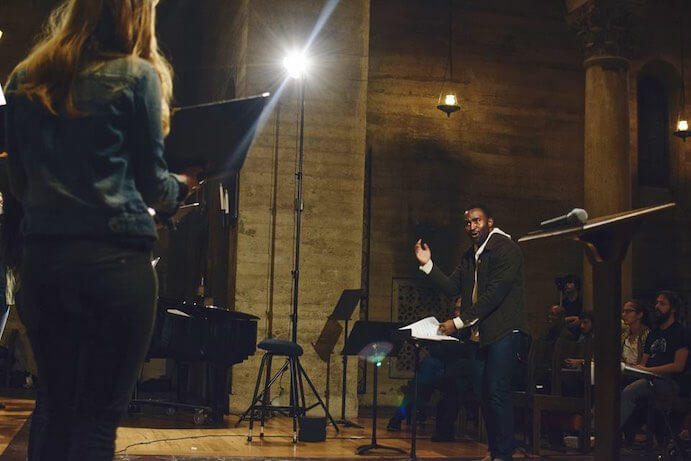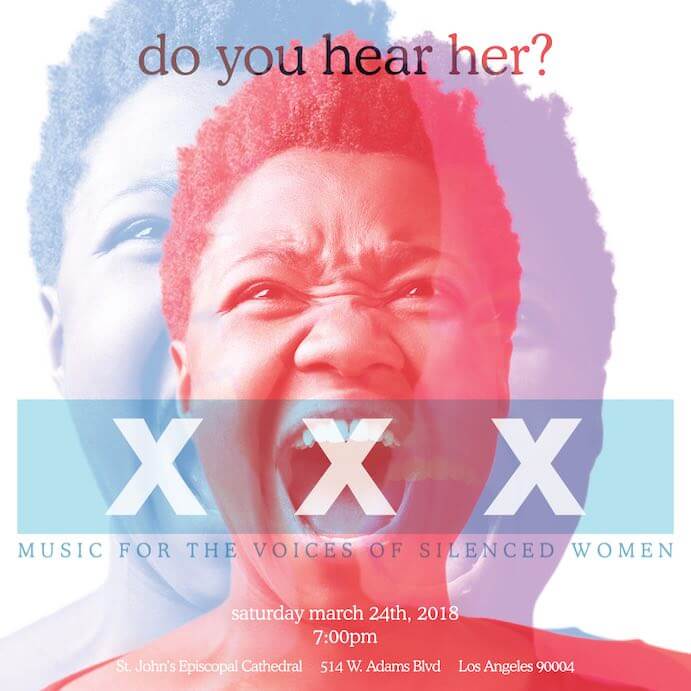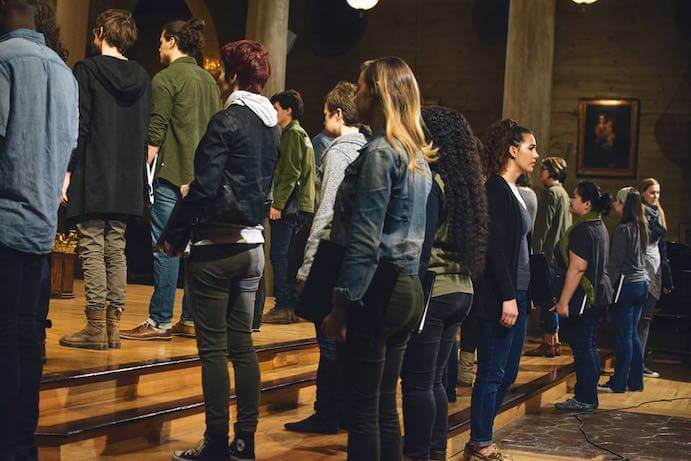A child dies locked in a detention center. Another black man is killed by police. A family mourns the loss of a loved one shot while shopping, going to church, or attending a concert. A woman speaks of harassment and abuse. These tragedies continue to occur at rapid succession, and each one stings a little more than the last.
In response to these stories, many musicians and music organizations have turned their attention toward using art to highlight injustice and marginalization. An altruistic desire exists within the performing arts community—however, the next steps involve more deliberate efforts in order to ensure that socially-engaged concerts serve as a productive outlet to join the fight against injustice.
In a recent review for National Sawdust Log, Rebecca Lentjes highlighted the dangers of what occurs when our efforts do not move past good intentions. She writes, “…it seemed that the creators wanted to ‘draw attention to’ a problem for the sake of it, at the end of a haphazardly multicultural program, and in a way that was harmful even while clearly well-intentioned.” Another writer on Twitter called out the new music scene for writing music on social justice topics while seemingly refusing to create events that do anything about the causes.
Yo #newmusictwitter – I see y’all are consistently writing pieces about social justice issues but I’ve only been to a handful of concerts that actually do something for said issues. What are you actually doing for the issues you’re writing about?
— Aeryn 💕 (@aaronlovestacos) June 25, 2019
As musicians promoting social healing, the task at hand evolves into working through the obstacles that interfere with making social justice concerts a productive part of society. As the founder of Tonality, a professional ensemble that solely focuses on themed concerts on social justice, I have worked through these pitfalls to discover prerequisites that I believe should be at the forefront of curator’s minds when programming these concerts. Challenging oneself to answer the following questions can truly merge art and social issues in a way that is most productive to the cause and equally stimulating for the audience.
What is the “call to action” of the concert?
So many times, themed concerts bring lovely music to an audience and turn their attention toward an issue, but audience members leave thinking, “I am even more charged up and energized about fixing these issues! Now what am I supposed to do with these feelings?” Social justice concerts that just take the audience on an emotional journey have missed out on an important opportunity. If the goal is to use art to make a difference, then some thought should go into specific action items for the audience members. What can we do to make sure that our audience—people to whom we have given an opportunity to engage with topics of injustice—becomes active participants in justice initiatives?
One simple step is to connect the audience to organizations that exist to address whatever injustice your concert is highlighting. Do audience members care about issues like homelessness or refugees? Of course they do! Can the majority of our audiences name three specific organizations in their area that were created to improve homelessness or advocate for refugees? Probably not. Many times in the media craze, we find that speaking out on issues might be the limit to the public’s engagement in social justice work.
The concerts, then, serve as crucial links between broad awareness of issues in our community and the practical steps to become part of the active work. Creating an option to support these social justice organizations monetarily is a good start to begin action. To further activate our audiences, these events can help audiences engage with those who are on the frontlines working on these initiatives. This leads to the next question.

Alexander Lloyd Blake conducts Tonality–Photo by Sammy Sohn
What additional voices are involved in presenting at concerts?
As musicians, we engage in this work because our lives have been touched by the musical art, and we believe that we, in turn, can touch the lives of others. At the same time, artists have knowledge, personal opinions, and relevant experience beyond playing notes. It is the combination of this life-changing experience and our own world views that we choose to tackle social justice topics and make a difference. However, we do not make as strong nor as positive an impact in isolation as when we collaborate with outside communities that have the resources and the capacity to mobilize people in practical ways.
Concerts with cooperative efforts and institutional and community support should act as catalysts, energizing a connection between the audience members and the organizations that need their support. Music helps to lead people emotionally to think deeper and to feel empathy toward the chosen subject. The speakers and the organizations, however, are the people who lead the audience to take the next practical action steps. For example, Tonality’s concerts involve speakers from organizations (i.e. Human Rights Campaign, March for Our Lives, NoStigmas) who have registered people to vote on site, talked about how to sign up for information, and explained what steps you should take when encountering people who have suicidal thoughts.
Unless the instructions are in the music, we as artists cannot be responsible for communicating every facet of the solutions and action items for each problem that our world is facing. We do not have to be the bearers of this information, but we can certainly act as a catalyst for activism and engagement. It takes a little more time, but with the extra effort comes the confidence in knowing the concerts are truly making some positive effect in the areas to which we guide our focus.

Tonality–Photo by Baxter Stapleton
What perspectives are leading the conversation?
With some social justice topics, the performers/presenters might not have any direct experience with the issues. Of course, that should not be any reason to prevent any group from presenting those themes at the concert. Where these concerts misstep is when the perspectives of the people who are directly affected are not taken into account.
For instance, I wanted to present a concert on women’s rights. As we were already planning a concert to discuss gender inequality, I wanted to highlight the #MeToo movement that had caught national attention. While I am not female, my experience as an African-American classical musician has given me many chances to feel the error when those who have not experienced a particular injustice don’t seek the opinions of those who have. These frustrations inspired me to set up meetings with female composers, singers, conductors, and Board members to ask their opinion.
In that meeting, when I presented my idea of a #MeToo concert, I was told that an event on that one subject would be limiting as it only presented women as victims. After our conversation, the concert turned into an event that focused on the silencing of women’s voices, and the strength that comes from breaking that silence. We eventually partnered with both Me Too International and Women Like Us Foundation, who then offered resources and recruited audience members to add their contact information to their mailing lists.
So much was gained from that experience of checking in and asking others for their input. While my initial thought would have been a great attempt at addressing women’s issues, it would have missed a crucial step in hearing the actual issues from the perspectives of people most directly affected.

Tonality Presents “Do You Hear Her?”
Is all of this really necessary?
This work is not easy. It takes consistent and insistent attempts at connecting with these organizations, and even more work to find people to take the time to answer questions that might help bring clarity to your project. Also, some of the most frustrating work can be convincing organizations strapped for time that their investment in a music concert is worth the extra effort.
Perhaps the marriage of trained musicians and humanitarian organizations is exactly what is needed to spur the much needed energy in this eternal fight against injustices. As artists, it is our unique talents that allow us to reach into the depths of the soul that sometimes remains untouched in these battles for empathy and understanding. Our audience–communities of people who might not ever feel personally connected to the issue at hand–can be brought closer emotionally to the pain and turmoil of the oppressed through our music. It is in my opinion that empathetic discomfort is the only real solution to get those with power/privilege/access to become true allies for other populations.
We have an uphill battle as classical musicians. In our society, there is a sense that our music rises above the grit of our lives and is only accessible as entertainment to a certain crowd that can enjoy an exclusive musical appetite. When the connotation of “music for the privileged” in our society is met with issues that affect those who usually do not have a representative voice, it is our duty to use our concerts to raise up those voices.
These crucial steps of creating a space to elevate affected individuals and to connect our audience to practical solutions are essential to social justice concerts. Without them, the event is doomed to be yet another loud cry for justice that speaks over—instead of to, with, and for—those voices who need to be supported.





















